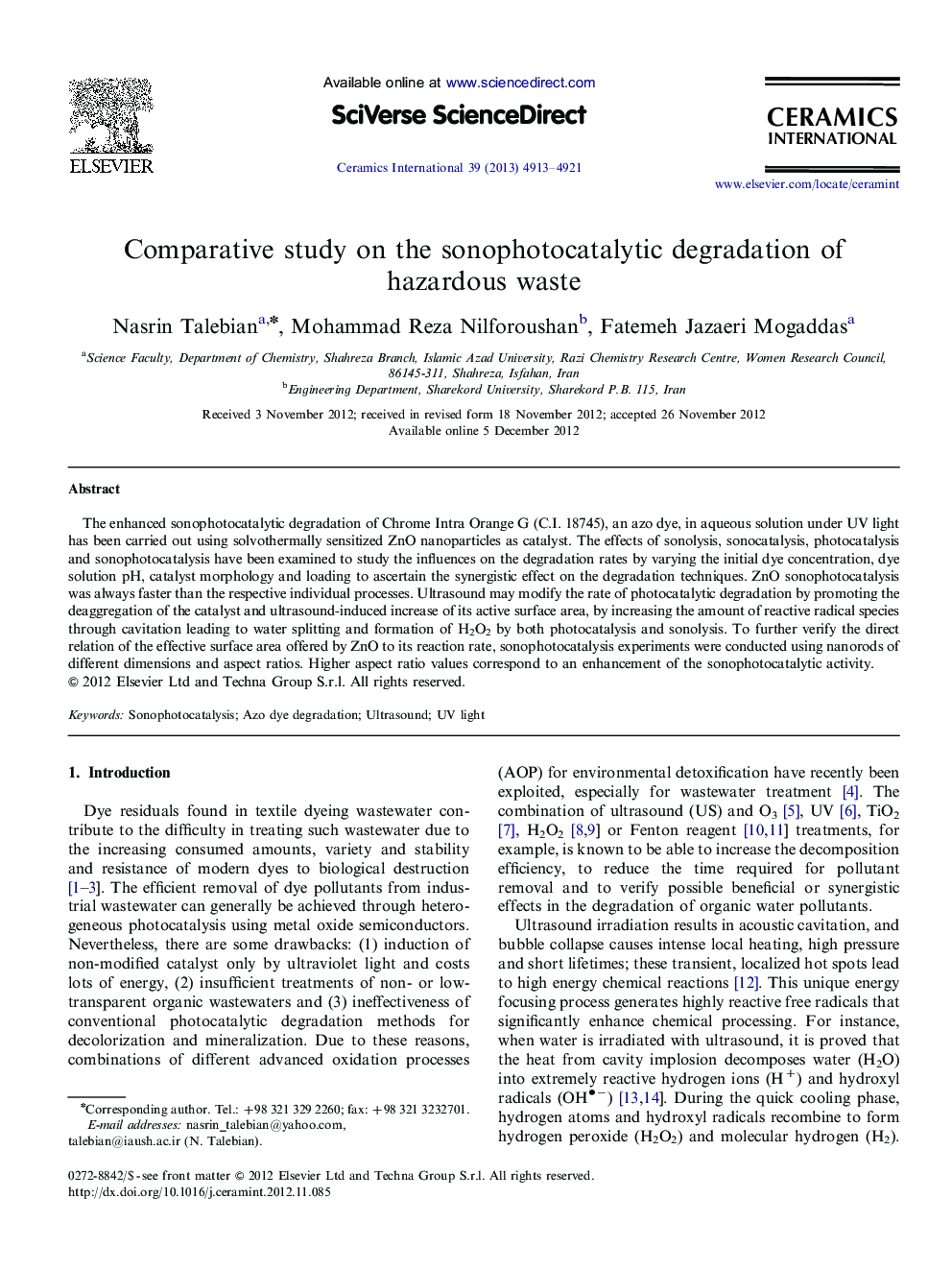| Article ID | Journal | Published Year | Pages | File Type |
|---|---|---|---|---|
| 1463091 | Ceramics International | 2013 | 9 Pages |
The enhanced sonophotocatalytic degradation of Chrome Intra Orange G (C.I. 18745), an azo dye, in aqueous solution under UV light has been carried out using solvothermally sensitized ZnO nanoparticles as catalyst. The effects of sonolysis, sonocatalysis, photocatalysis and sonophotocatalysis have been examined to study the influences on the degradation rates by varying the initial dye concentration, dye solution pH, catalyst morphology and loading to ascertain the synergistic effect on the degradation techniques. ZnO sonophotocatalysis was always faster than the respective individual processes. Ultrasound may modify the rate of photocatalytic degradation by promoting the deaggregation of the catalyst and ultrasound-induced increase of its active surface area, by increasing the amount of reactive radical species through cavitation leading to water splitting and formation of H2O2 by both photocatalysis and sonolysis. To further verify the direct relation of the effective surface area offered by ZnO to its reaction rate, sonophotocatalysis experiments were conducted using nanorods of different dimensions and aspect ratios. Higher aspect ratio values correspond to an enhancement of the sonophotocatalytic activity.
